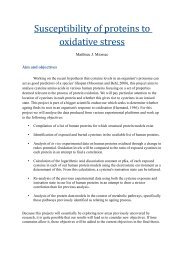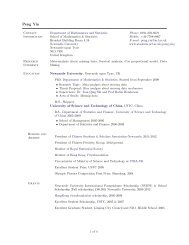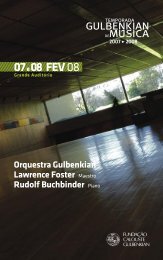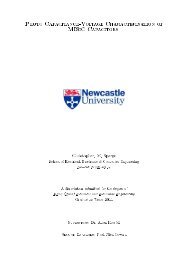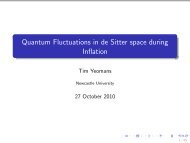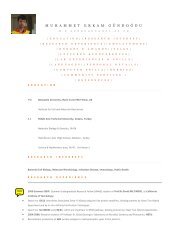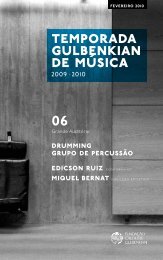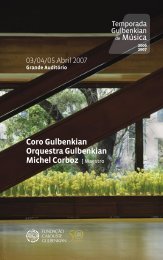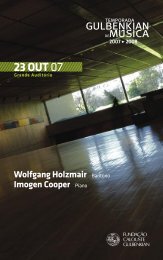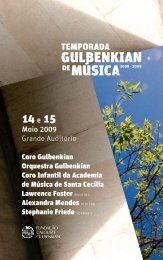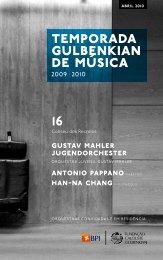Retinal Prosthesis Dissertation - Student Home Pages
Retinal Prosthesis Dissertation - Student Home Pages
Retinal Prosthesis Dissertation - Student Home Pages
Create successful ePaper yourself
Turn your PDF publications into a flip-book with our unique Google optimized e-Paper software.
In the Xilinx Virtex 5 the DCM has the following possible divisions from either<br />
400MHz or 100MHz: 1.5, 2, 2.5, 3, 3.5, 4, 4.5, 5, 5.5, 6, 6.5, 7, 7.5, 8, 9, 10, 11, 12,<br />
13, 14, 1`5 and 16. So one possible combination to obtain 400kHz as the `out_clock’<br />
value would derive 40MHz as the output from the DCM and divide this by 100 in<br />
the programming block labeled “get_partial_clock_from_incoming_clock”. At 5fps<br />
for the same image to obtain 80kHz as the out_clock derive 20MHz as the output<br />
from the DCM and divide this by 250.<br />
In the block “get_spike_on_from_partial_spike_clock” divide by four to get the<br />
spike_clock frequency for all fps e.g. @25fps this would be100kHz.<br />
In the block get pixel_clock_from_partial_spike_clock divide by one thousand to get<br />
the pixel frequency for all fps e.g. @25fps this would be 400Hz<br />
The three instance of the “pulsar” block convert conventional 24 bit colour measure<br />
to a pulse count (described earlier), over time, for each of the three colour planes:<br />
red, green and blue.<br />
The counter counts and outputs the address bits for each pixel as it occurs.<br />
Finally “pulse_count_to_pc_stream” time multiplexes and outputs the AER stream<br />
consisting of AER packets with a payload of 18 bits. The first six bits of the payload<br />
represent the colour intensity for the red plane, followed by six bits for green and<br />
blue planes respectively.<br />
4.6 Chapter summary<br />
The size of the image in pixel count (to be transmitted) will be limited by the number<br />
of electrodes possible at the retinal implant and presently (2010) this is expected to<br />
rise to over 1000 within several years. For the sender chip; programmes were<br />
completed both behaviourally and structurally i.e. synthesised and implemented for<br />
image sizes ranging from 16 pixels (4 by 4) up to 1024 pixels (32 by 32). To<br />
91 of 200




